Getting started with the CLM solution
Administrators rejoice! It’s never been easier to install, configure, administer and learn the Rational solution for Collaborative Lifecycle Management. Reduce your total cost of ownership with this integrated solution.- Four Installations in one wizard
- Unified setup wizard
- Setting up multiple servers with a properties file
- Unified Administration
- Server Administration
- User Administration
- Lifecycle Project Administration
Four Installations in one wizard
With this release, the CLM solution can be installed from one installation wizard. The Jazz Team Server and the Change and Configuration Management, Requirements Management and Quality Management applications share a common install. You can install any of these applications. To gain access to to the capabilities, simply install the appropriate licenses.
When you launch the installer, a wizard is presented to help you through the installation process. You can install any of the three applications by selecting the appropriate check box as shown in the image below:

This same installation wizard is used for installing the individual Rational products.
Unified setup wizard
The setup wizard applies to all applications in the CLM solution. The wizard detects what you have installed and presents the UI appropriate for setting up the installed applications in your CLM solution.
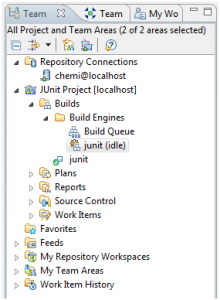
Point your browser to: <your.server.name>:9443/jts/setup to access this wizard
Setting up multiple servers with a properties file
Watch how to script a setup process for your CLM servers. This video includes information on how to generate a properties file to automate the process.
Unified Administration
This release introduces a single place to administer your server, users and lifecycle projects.
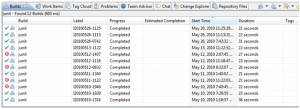
Point your browser to <your.server.name>:9443/jts/admin to access this application, or use the Home menu to navigate to the Jazz Team Server Home, as shown below:

Server Administration
This release introduces a single place to administer your server. Manage the server, users, and reports from this server administration user interface.

User Administration
The user admin user interface provides one location to manage all users who are accessing the applications that share a common Jazz Team Server. As always LDAP is supported, but now you can connect to your LDAP server from one shared JTS.
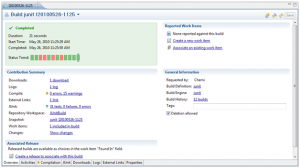
Lifecycle Project Administration
The Lifecycle Project Administration (LPA) application is a new application that is included in the Rational solution for Collaborative Lifecycle Management. The purpose of the Lifecycle Project Administration application is to simplify the management of projects across the lifecycle and provide a unified interface for managing related project areas in each of the CLM applications. LPA introduces the notion of a “lifecycle project” which is an aggregation of one or more artifact containers (project areas) from the CLM applications.
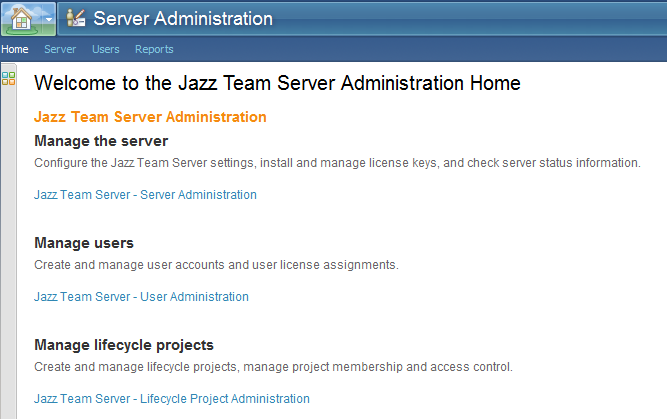
LPA gives administrators a single user interface where they can create and manage lifecycle projects and the members of those projects.
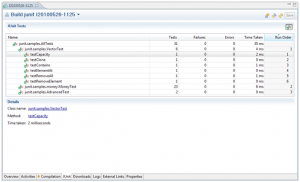
Lifecycle projects are created from templates that define the artifact containers to be created as well as the relationships between those artifact containers. LPA ships with a number of predefined templates, but administrators are also able to define custom templates if the default templates do not meet their needs. Custom LPA templates give administrators a great deal of flexibility around the project areas that will be created, the process templates that can be used to create each project area, and the relationships between the project areas.

Another important part of the Lifecycle Project Administration application is member management. LPA allows administrators to manage membership and process roles for users across all of the project areas that belong to a lifecycle project. In addition to these membership management capabilities, LPA allows administrators to specify a set of recommended role assignment rules for the lifecycle project. These rules define the relationships that are expected to exist between process roles. For example, a rule could specify that anyone who has the “Product Owner” role in CCM should also have the “Author” role in RM so they can create requirements artifacts. Violations of these rules are surfaced in the LPA member management page so they can be addressed by an administrator.

See the jazz team blog for more information about Administering Lifecycle Projects